How much are you willing to spend to save on gas?
That’s the question presented by the Big Three hybrids in the compact crossover class, the Honda CR-V hybrid, the Toyota RAV4 Prime (Toyota-speak for a hybrid you can plug in) and the Ford Escape plug-in hybrid, which is the focus of this write-up.
They use less gas than their gas-engine-only counterparts. But they all cost more to buy, too.
The Escape plug-in hybrid, for instance, lists for about $12k more than a base-trim/non-hybrid Escape. Ford is probably well-aware that spending an extra $12k just to “save” on gas isn’t likely going to sell many buyers. And that’s probably why the plug-in hybrid version of the Escape is also loaded with standard options such as heated seats (and steering wheel), a larger 13.2 inch LCD touchscreen, adaptive cruise control and a number of additional luxury/tech features.
What It Is
The Escape is Ford’s entrant in the compact crossover class.
It’s about the same size and generally similar to its main rivals in the class, the Honda CR-V and the Toyota RAV4. All three have offered available with hybrid drivetrains, though there are some differences there.
One of them being that – at least for now – Honda no longer offers a hybrid version of its popular small crossover.
Another is that both the Ford and the Toyota (Prime) hybrids are plug-in hybrids, which means their batteries can be recharged without driving them. Also, they can be driven on battery power alone for about 40 miles (37 for the Ford, 42 for the Toyota). The Honda CRV hybrid was a more basic hybrid that could not be externally powered. It used its batteries and motor to provide supplementary power for acceleration and to power the electrical accessories when the CRV’s engine wasn’t running. It had to burn gas to charge up its batteries – and to move at more than a crawl.
It was, however, more likely to save you money as it only cost $32,010 to start and only needed to burn a gallon of gas to go 40 miles in city driving (35 on the highway).
The plug-in version of the Escape starts at $40,500 (vs. $28,000 for the base trim non-hybrid version of the Escape).
A Toyota RAV4 Prime (plug-in hybrid) lists for $43,090.
So if you buy the Ford, you’ll be saving some money . . .
What’s New For 2023
Three years after its last major makeover (in 2020) the ’23 Escape gets minor front and rear styling tweaks and an upgraded version of Ford’s Sync infotainment interface and a larger optional touchscreen (standard in the hybrid).
What’s Good
Plug-in hybrid has the potential to save even more gas if you avoid burning it – which you can do by driving it as much (and as far) as you can on battery power alone.
You’re not tethered to a cord.
Same general appeal as the regular Escape.
What’s Not So Good
It’s a spendy way to save money.
Toyota still offers a non-plug-in hybrid version of the RAV4 that cost about $8k less ($31,225) that averages the same 40 MPG as the Escape plug-in hybrid.
Significantly less cargo-carrying space than the CR-V.
The Escape comes standard with a 1.5 liter, turbocharged three cylinder engine; yes, you read that right. It’s an awfully small engine for a vehicle that weighs 3,283 lbs. (with FWD).
But – via the Miracle of Boost – it makes 181 horsepower (and 190 ft.-lbs. of torque) which is output comparable to that of 2.8 liter or so V6 without a turbo from about 20 years ago. The chief difference isn’t the power but the mileage. The three delivers 27 city, 34 highway – which is better by about 5 MPG than something similar with a V6 (without a turbo) delivered circa the 2000 or so model year.
It also produces more low-end torque, so it feels like the bigger engine it’s not. On the downside, it’s almost constantly under boost – and that means its internals are under pressure. It’s why – historically – turbo-boosted engines were rarely found in other than high-performance vehicles, where longevity was less an issue than performance. But that’s the price we are paying for higher mileage out of smaller engines.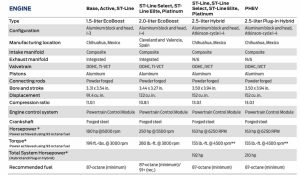
The three is paired with an eight speed automatic – not a CVT automatic – and you have your pick of front-wheel-drive or (optionally) all-wheel-drive.
More power is available if you want it – in ST-Line, Select and Platinum trims. These come standard with a larger, 2.0 liter (four cylinder) engine – also turbocharged – that makes 250 horsepower and 280 ft.-lbs. of torque. It is one of the strongest engines available in the class, with the exception of the new Dodge Hornet’s standard 2.0 liter 268 horsepower turbo’d four.
All-wheel-drive is standard with this engine.
The plug-in hybrid is the way to go if you want mileage, power and range. Without having to wait.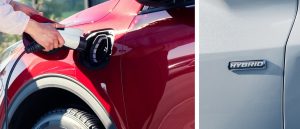
It comes standard with a larger 2.5 liter four cylinder engine – this time without a turbo – paired up with a plug-in hybrid (battery/motor) drivetrain that has the power to propel the vehicle at normal road speeds for about 37 miles without the gas engine running (and burning). That’s how it averages 40 MPG. But because running the engine can recharge the battery as you drive, you don’t have to stop – except for gas – and doing that doesn’t take much time.
This is one of the chief draws of the plug-in hybrid layout: You can run on electricity but you’re not tethered to a cord.
Thirty seven miles of EV range is less range than a fully electric car can travel. But that misses the point, which is not having to plan your driving around all that waiting. And if you don’t drive more than 37 miles – and have a place (and the time) to charge when you get there – you could end up with a vehicle that averages much better than 40 MPG.
Regardless, you’ll have the versatility of a dual-fuel layout. If the power goes out, you’ll be able to drive – if the tank has gas in it. If the gas station’s power is out – and the pumps are off – you’ll also be able to drive, if you can find a place to plug in.
The hybrid Escape is powerful, too.
Combined output is 210 horsepower – midway between the output of the 1.3 liter turbo’d three and that of the 2.0 liter turbo’s four – and comparable to the output of an early-’90s 5.0 liter V8 as in the Mustang GT or Camaro Z28 of that era. These did not average 40 MPG.
But, the hybrid Escape is heavier – 3,904 lbs. – and that’s probably why it is the only ’23 Escape that’s only available with front-wheel-drive. It’s also probably why its maximum tow rating – just 1,500 lbs. – is less than that of the non-hybrid Escape with the three cylinder engine, which (incredibly) is rated to pull up to 2,000 lbs.
If you go with the 2.0 liter-equipped Escape, you can pull up to 3,500 lbs.
On the other hand, the plug-in Escape can get to 60 MPH in just over 7 seconds – which is very quick for a nearly two-tonner that averages 40 MPG.
On The Road
If you like the idea of driving an EV but are leery about the idea of being limited by one, then a plug-in hybrid like this one could be the right one.
With its battery full charged – which takes less time (about 3.5 hours on 240V Level II) to do than it takes to fully charge a full-time EV’s battery, because the hybrid’s battery is much smaller – you have a vehicle that can be driven on electric power for a distance long enough to cover most short-range driving, both there and back. You’ll experience the same silent-running and you’ll be using no gas while it’s running.
But so long as there’s gas in the tank, you will never have to worry about how much range you’ve got left – or whether there’s a place to plug in where you’re headed (or along the way). Or whether you have the time to deal with the wait.
If you exceed the range on battery power, engine power automatically replaces it – and you keep on going. For the next 500-plus miles. That’s the Escape plug-in’s range on gas and electric power. That’s how far you can go on a full charge and a full tank. And refilling its 14 gallon tank takes less than five minutes, so you won’t have to spend 30-45 minutes waiting for a partial charge at a “fast” charger.
Driving the Escape plug-in is not an exciting experience – but that’s not what people buy Escapes for. They buy them because they’re useful appliances and that’s what you’re getting here. One that’s much more useful than a battery-powered appliance. Or at least, one that is solely powered by batteries. The whole point of buying a vehicle is to be able to drive it – not to park it.
And that’s what you’re getting here.
At The Curb
Like the models it competes with, the Escape looks a lot like the models it competes with. Almost everyone who sells cars sells a compact crossover like the Escape. It’s why Ford sells the Escape with three different drivetrains, so as to offer something functionally different.
There are some other differences, too. 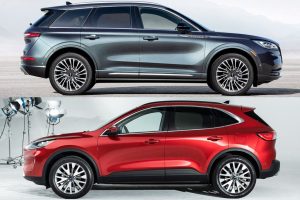
The tested plug-in hybrid is for all intents and purposes a luxury crossover. It has a digital instrument cluster, a huge(13.2 inch) secondary LCD touchscreen, a 10 speaker Bang & Olufsen premium audio system, a full-roof panorama sunroof and quilted leather seat covers. It was easy to imagine it as a Lincoln – which isn’t hard because Ford sells the Escape as one (more about that here). And while the Lincoln looks more like a luxury crossover on the outside, the Escape plug-in looks (and feels) pretty close once you’re inside.
And – even though the tested plug-in Escape with all of those features came with a luxury crossover price (almost $48k) it was still almost cheap compared with the $55,320 price of more-or-less the same thing wrapped in Lincoln livery.
In terms of utility, the Escape – plug-in and otherwise – has a little less cargo-carrying capacity than its main rivals in the class, the Honda CR-V and the Toyota RAV4. The Ford has 34.4 cubic feet of cargo space behind its second row and 60.8 cubic feet total with them folded down. The RAV4 has 37.6 cubic feet and 69.8 cubic feet and the Honda has 39.3 cubic feet – and a class-leading 76.5 cubic feet in total. But the Honda is not currently available with a plug-in hybrid drivetrain and the Toyota costs several thousand dollars more with its available plug-in drivetrain.
Ford used to offer the Escape with a hybrid drivetrain without the cord. It was a hybrid like the hybrid version of the Honda CR-V that’s not currently available, either. It wasn’t able to drive 37 miles on battery power, like the plug-in version. But it did go 44 miles – on a gallon of gas – in city driving (and 37 on the highway) and it stickered for only $30,185. It was not as loaded (or as powerful) as the plug-in hybrid Escape. But it was much more affordable.
Now, if you want to save on gas, you’ll have to spend more money.
The Bottom Line
The Escape’s looks may not draw much attention. But if you’re looking for something that’s not the same as everything else, the Escape’s worth taking a look at.
. . .
If you like what you’ve found here please consider supporting EPautos.
We depend on you to keep the wheels turning!
Our donate button is here.
If you prefer not to use PayPal, our mailing address is:
EPautos
721 Hummingbird Lane SE
Copper Hill, VA 24079
PS: Get an EPautos magnet or sticker or coaster in return for a $20 or more one-time donation or a $10 or more monthly recurring donation. (Please be sure to tell us you want a magnet or sticker or coaster – and also, provide an address, so we know where to mail the thing!)
If you like items like the Safety Cult T shirt pictured below, you can find that and more at the EPautos store!



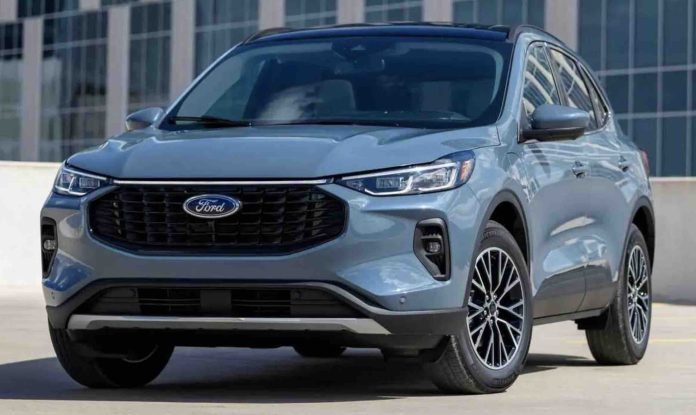

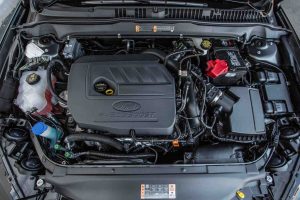








$50K for a Ford Escape? GTFOOH!
Hi Mark,
Yup; that was my reaction as well when I was reading through the paperwork that comes with the vehicle. Granted, it’s a plug-in hybrid Escape. But, still. It’s very clear to me that “electrification” equals impoverishment.
Hi Eric,
Quick technical question…..We all have heard that EV only cars, like Teslas etc, have the potential to spontaneously burst into flames. And “what a shame” that is. 😉 Do plug in hybrids have the same tendency? And what about good old “regular” hybrids like the Prius?
Thanks
It really reminds me of all the “save 10¢ per gallon”… if you buy or do all kinds of stupid shit. I mean, great if you need that shit on the buy list anyway, but just about 99% of the time, I sure don’t. But even more, you gotta either up the reward or lower the requirements.
We’re talking about $1.60 max if my tank were 100% empty, which it never is. Or, ok, if I take the A8, then $2.00 max.
WHOOPEE!!
No thanks, I don’t want your shit (e.g., Kraft, Nabisco, etc.). My time and my dignity are worth more than $2.00.
The EV or PHEV is an extended play of that same shit. For the low, low cost of just a mere $12,000 more, you can save five dollars on gas!!
Beyond that scam, what do these vehicles offer above and beyond the existing gas engines? I mean, I know that some newer cars that have “mild hybrid” technology actually do offer advanced features above and beyond the gas engine. It eliminates belt-driven accessories, etc. So that’s a legitimate thing. Whether or not that’s worth the extra money up front or in the long run (i.e., maintenance) is a separate concern.
The manufacturers assume most people are stupid. I’m not so sure people are *that* dumb. Maybe.
What you’re really paying for is fewer trips to gas stations, especially in parts of the country where gas stations are less safe.
If there are 500 billion barrels of oil at the depocenter of an oil formation, at 365 million barrels per year production statistics, 1,000,000 barrels per day, it will take 100 years to produce 36.5 billion barrels of oil. You’re looking at a time period of more than a thousand years of petroleum from just one rock oil formation, all 500 billion barrels are recoverable, maybe even more. Oil is being cooked with heat and pressure thousands of feet deep. Who is going to stop oil from being formed from kerogen?
Bueller?
Not a chance.
I gassed up at a filling station in Boulder, Colorado back here about a few years ago.
The gas station attendants were protected by thick gun-proof glass, maybe thick Lucite. Absorbs the energy of the bullet, doesn’t shatter, the impact doesn’t do much good. Test results reveal the conclusions.
It was easy to see that the gas station owners were of foreign nationality. An easy decision, once is enough, don’t go there again.
Something is going on here, what it is ain’t exactly clear.
It’s a big club and you ain’t in it.
Brand new filling stations are being constructed, improvements for rock oil distillate distributions going on all over the place, it’s a happening thing.
Hydrocarbons rule. Nothing else. You want electricity? Hydrocarbons to the rescue, the primary source. Please feel free to recognize the freaking facts!
“You know when I wash my hands after going to the bathroom? When I get shit on them.” – George Carlin
Gas stations less safe???? Come on, really, you are reaching. Go ahead and pull out the random one or two examples of some fire or something from a gas station over the last 5 years or so. Still not going to convince the rational person that gasoline stations present a safety problem. There are not enough charging stations around to make a blip on the radar, but I’m not going to question their safety, though I think driving electric cars is for jerks.
Well…. depends on where you live.
https://www.nbcbayarea.com/news/local/emeryville-police-warn-public-of-gas-station-thefts-trend/2768564/
Here’s one way of taking care of the problem.
https://www.nbcbayarea.com/news/local/driver-called-a-hero-after-stopping-theft-at-oakland-gas-station/3234070/
So did you plug it in? Would be interested in seeing a real world test of the electric only range, just to see if it matches the claim or if it is more in line with what EV claims are. Also would be nice to see how long it takes to fill up the hybrid’s battery as compared to the non-charge batteries you’ve tested.
‘a huuuuuge (13.2 inch) secondary LCD touchscreen’ — eric
[second photo from the top] Don’t get me started. This one looks EXACTLY like some DIYer used stick-on Velcro to secure an outsized Clownscreen to the plastic dash — and maybe a couple of corner brackets from Ace Hardware, too, with flathead Phillips screws.
Impressive … NOT! [even though copied from Emperor Eeeeelon, whose square-headed taste (which rivals Bill Gates for flat-footed clunkiness) is supposed to make this hideous protuberance aesthetically acceptable]
Never have I owned a vehicle with a Colorful Clownscreen [not to mention a screaming little dogshit-three under the hood] and, Deity willing, never will.
I am not having crap like this. *bangs spoon loudly on soup bowl*
I know, Jim… I know…
Have you seen the interior of the ’23 “Honda” Prologue? It looks almost exactly the same. Meanwhile, what else looks like this? https://cdn.dealeraccelerate.com/volo/1/18270/513307/790×1024/1976-pontiac-trans-am
Round gauges in an engine-turned facade? A flat steering wheel with no air bag? Wind-up windows? And a transmission that you have to shift yourself, with gross movements of the feet and arms?
ANATHEMA! Soon the internet will be scrubbed of such primitive gearhead porn, to spare the impressionable minds of children from the dangerous, selfish notion that they can just cast saaaaafety (not to mention the feverish climate) to the four winds.
Hark — your robo-taxi awaits, to fetch you to the Joseph R Biden Re-education Kamp. Reflect and repent.